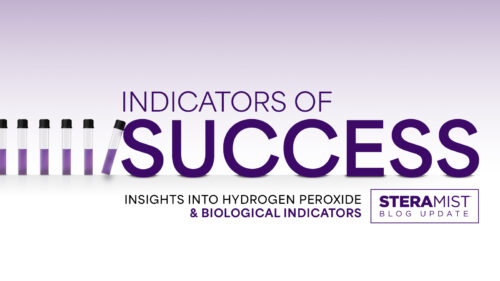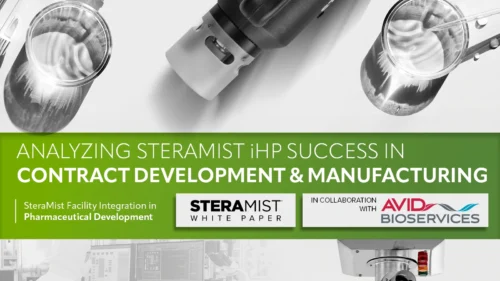Case Study – Aviation Week
As COVID-19 vaccination programs ramp up, airlines expect the release of huge pent-up demand for air travel. Yet while people still want to
visit loved ones and holiday abroad, they are also more cautious about the risk of infection. Therefore, airlines need not JU st for governments to re-open travel corridors – but also for the public to have the confidence to use them.
Instilling such confidence means ensuring that aircraft and airport interiors are far more hygienic than they were before the COVID-19
pandemic. A quick wipe-down of cabin seats will no longer suffice for passengers bombarded with news of mutant viral strains and overloaded hospitals.
At the same time, any new hygiene measures need to be safe, practical and have limited impact on aircraft turnaround times. Enhanced security measures have made flying a more grueling experience since the 9/l l terror attacks, and the public has little appetite for more delays.
The right solution
Since the start of the pandemic, airlines have experimented with various ways of disinfecting aircraft cabins. Unfortunately, most have serious drawbacks, notably
dubious effectiveness, excessive application times, and corrosive or toxic residues.
Manual cleaning, for example, is not particularly effective, fast or kind to cabin surfaces. Furthermore, it is ‘touch’ work, which risks cross-contamination – spreading around the very pathogens it is meant to eliminate. And while there are no-touch solutions like ultraviolet sterilization and hydrogen peroxide vapor, these are slow to apply and suffer from uneven dispersion. In some cases, they also risk cracking plastics and releasing harmful off-gases.

The exception is TO Mi’s SteraMist, a no-touch solution that can quickly decontaminate every inch of an aircraft cabin or cockpit without leaving any toxic or caustic residue. Furthermore, it is safe to use with aircraft electronics, unlike hydrogen peroxide vapor, bleach or electrostatic sprayers.
SteraMist’s dispersion system ionizes a 7.80/o solution of hydrogen peroxide, allowing it to spread like a gas and reach every part of an interior. In the confined space of the aircraft cabin, it will also effectively eliminate any lingering airborne viruses. Two dispersion units can disinfect a single-aisle aircraft in about 45 minutes, including ventilation time.
Of course, the system is also vital for high-transit airport spaces like bathrooms, baggage handling, gates and lounges, which otherwise might become vectors for infection. Furthermore, SteraMist can play a critical role on business Jets and on cargo aircraft, particularly those routing through countries with high rates of COVI D-19 or other viruses such as Avian flu, MERS and Ebola.
SteraMist also kills bacteria and fungal spores, giving it an extra function as an effective mold and mildew treatment. Another advantage is that by neutralizing volatile organic compounds in the air, it can tackle the unpleasant cabin odors that prompt passenger complaints.
How it works
SteraMist has already proven itself in many high-contamination environments, having been used widely in COVID-19 wards, air ambulances and repatriation flights. Indeed, its original development was by the US Defense Advanced Research Projects Agency (DARPA) to counter an even more sinister threat than the
coronavirus: weaponized anthrax spore attacks.
The culmination of this development is a handheld unit that passes hydrogen peroxide solution at high pressure through a cold plasma arc.. The result is a mist of ionized hydrogen peroxide (iHP) that contains one of the most powerful oxidizing agents in nature – hydroxyl radicals. These disrupt the cellular structure of pathogens on contact, leaving an organic trace of only water and oxygen with no residue.

As SteraMist units are portable and easy to use, they do not unduly divert ground staff from other tasks. Learning to operate them can take as little as one hour, while in all cases TOMI provides customized training and technical support.
Restoring confidence
s the coronavirus has spread and evolved, so has the public’s understanding of it, particularly the risk of airborne transmission. As a result, the manual traditional cleaning method of cloth and spray is increasingly viewed as inadequate in busy public spaces. Any no-touch solution, meanwhile, will be interrogated for how thoroughly and safely it can decontaminate a space.
The general attitude to infection is also shift ng. Even if coronavirus were eliminated tomorrow, travelers would likely be more wary about lesser illnesses – the common cold, for example – than they were before the pandemic.. For proof, note how mask-wearing persisted in many Asian countries even after the threat of SARS-1 had receded.

The aviation industry must respond to this caution with new hygiene measures, while also preparing for the threat of another pandemic from a potential ‘Disease X’. Since the turn of the century, such threats have emerged frequently, and have included SARS, Swine Flu, Middle East Respiratory Syndrome, Ebola, Zika and COVID-19. Not all developed into full-blown pandemics, but going forward, governments are likely to require or impose beefed-up countermeasures to avoid any return to the paralyzing lockdowns of the past year.
Aviation companies recognize this trend, spurring interest around the world in TOM l’s unique solution.
“When looking for a suitable disinfect on system for airplanes and helicopters, we discovered iHP [SteraMist], which is also compatible with the rules of the European Union Aviation Safety Agency,” says Jonas Scheid, founder of Scheid Aviation.
“With no negative effects on aircraft structures and electronics, as well as a very short exposure time, it is the perfect solution for aviation. Scheid now has multiple SteraMist Surface Units and deploys throughout Germany’s European aviation market,” he adds.

Approved by the US Environmental Protection Agency to counter the full range of existing and emerging pathogens, SteraMist’s hospital-grade disinfection with no harmful residue will help restore confidence in the safety of air travel. Just as importantly, its quick, easy and environmentally friendly application makes SteraMist the most practical solution for aircraft and airport operators.



